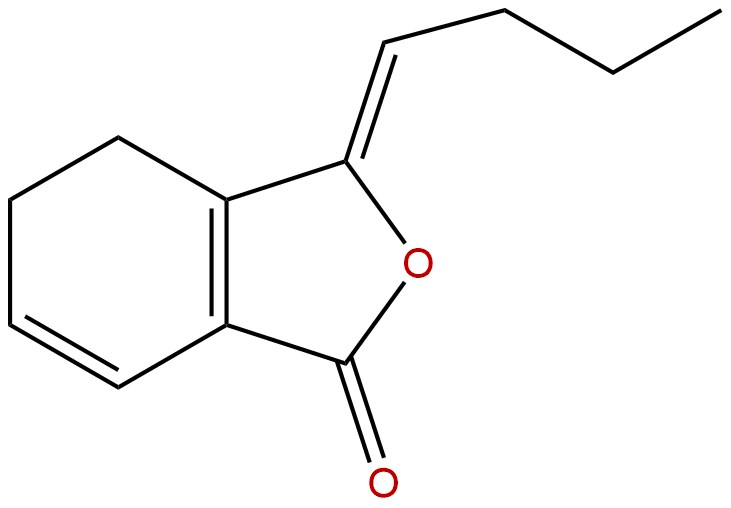
LigustilideCAS No.:81944-09-4
|
||||||||||
 |
|
|
||||||||

| Catalogue No.: | BP1469 |
| Formula: | C12H14O2 |
| Mol Weight: | 190.242 |
Product name: Ligustilide
Synonym name: Z-Ligustilide;4431-01-0
Catalogue No.: BP1469
Cas No.: 81944-09-4
Formula: C12H14O2
Mol Weight: 190.242
Botanical Source: Ligusticum and Angelica spp.
Physical Description: Oil
Type of Compound: Miscellaneous
Purity: 95%~99%
Analysis Method: HPLC-DAD or/and HPLC-ELSD
Identification Method: Mass, NMR
Packing: Brown vial or HDPE plastic bottle
Storage: Store in a well closed container, protected from air and light. Put into refrigerate or freeze for long term storage.
Whenever possible, you should prepare and use solutions on the same day. However, if you need to make up stock solutions in advance, we recommend that you store the solution as aliquots in tightly sealed vials at -20℃. Generally, these will be useable for up to two weeks.
The product could be supplied from milligrams to grams, up to kilograms
Inquire for bulk scale.
Descriptions:
Ligustilide and senkyunolide A, two of the most abundant Ligusticum chuanxiong constituents, have vasorelaxation activities in contractions to various contractile agents in rat isolated aorta. [1]
Ligustilide, one of the main compounds of Danggui essential oil, possesses antinociceptive and anti-inflammatory activities, also has an active dilatory effect on myometrium and an effective role in reducing the neurogenic and inflammatory pain, thus it has the potential to be developed into an effective drug for the treatment of various pain syndromes including primary dysmenorrhoea.[2]
Ligustilide exhibits anti-inflammatory activities by blocking the activation of MAPKs/IKK and the downstream transcription factors AP-1 and NF-κB, which may result from ligustilide's down-regulation of iROS production.[3]
Ligustilide has therapeutic effect against (AD)-like neuropathologies, it upregulates Klotho expression in the cerebral choroid plexus and serum, decreases and Forkhead box class O1 and inhibits the -like growth factor 1 pathway and induces Forkhead box class O1 activation in 293T cells along with Klotho upregulation, suggests that Klotho might be a novel therapeutic target for age-related AD, and Klotho upregulation might contribute to the neuroprotective effect of ligustilide against AD.[4]
References:
[1] Chan S, Cheng T G. J Ethnopharmacol, 2007, 111(3):677–80.
[2] Du J, Yu Y, Ke Y, et al. J Ethnopharmacol, 2007, 112(1):211-4.
[3] Su Y W, Chiou W F, Chao S H, et al. Int Immunopharmacol, 2011, 11(9):1166-72.
[4] Kuang X, Chen Y S, Wang L F, et al. Neurobiol Aging, 2014, 35(1):169-78.
[5] Wei L V, Lian W U, Na Y E, et al. Pharmacy & Clinics of Chinese Materia Medica, 2014, 5(2):13-15.
HPLC of Ligustilide
